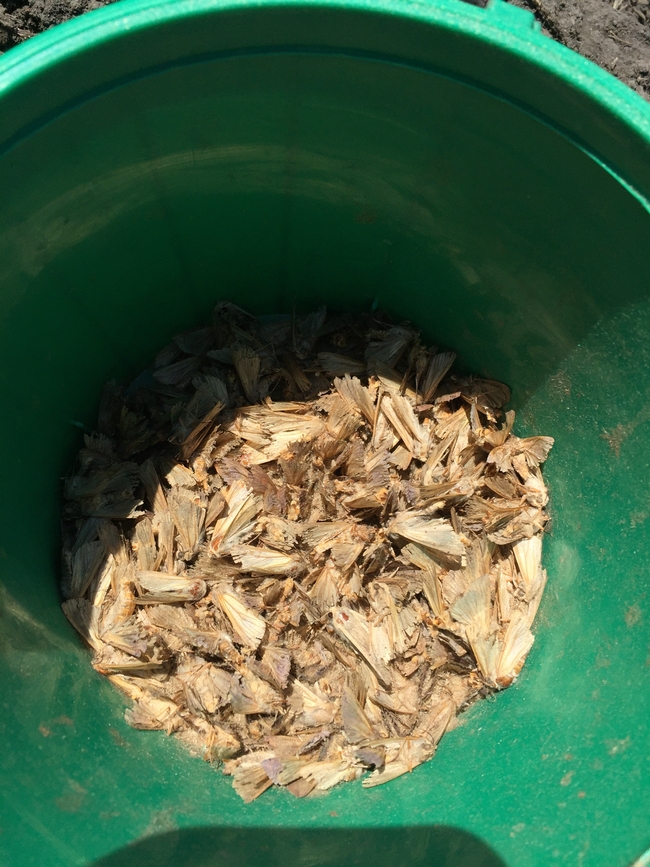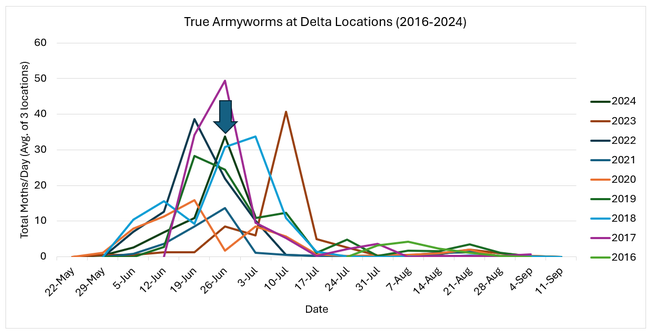
Figure 2 shows monitoring data since 2016 when I began trapping in the Delta. Data are expressed as moths caught per day, averaged across all nine Delta traps. Notice the large arrow indicating the 2024 trend line and how it compares to previous years. While this year appears to be a high-population year, I have noticed variability among the sites where we trap. At one of the three locations, the population peaked at only 9 moths per day, but at the other two locations, the populations peaked at over 40 moths per day. Therefore, it's important to get into the field and look for feeding damage before making a treatment decision.
We reached the peak moth flight last week. Our years of monitoring experience indicates that, if treatment thresholds are met, the optimum time to spray is between one to two weeks after the peak population. So, this would be the week to check your fields for feeding damage and treat as necessary. Please don't hesitate to reach out to me if you have any questions about the IPM guidelines or would like to further discuss this work.
